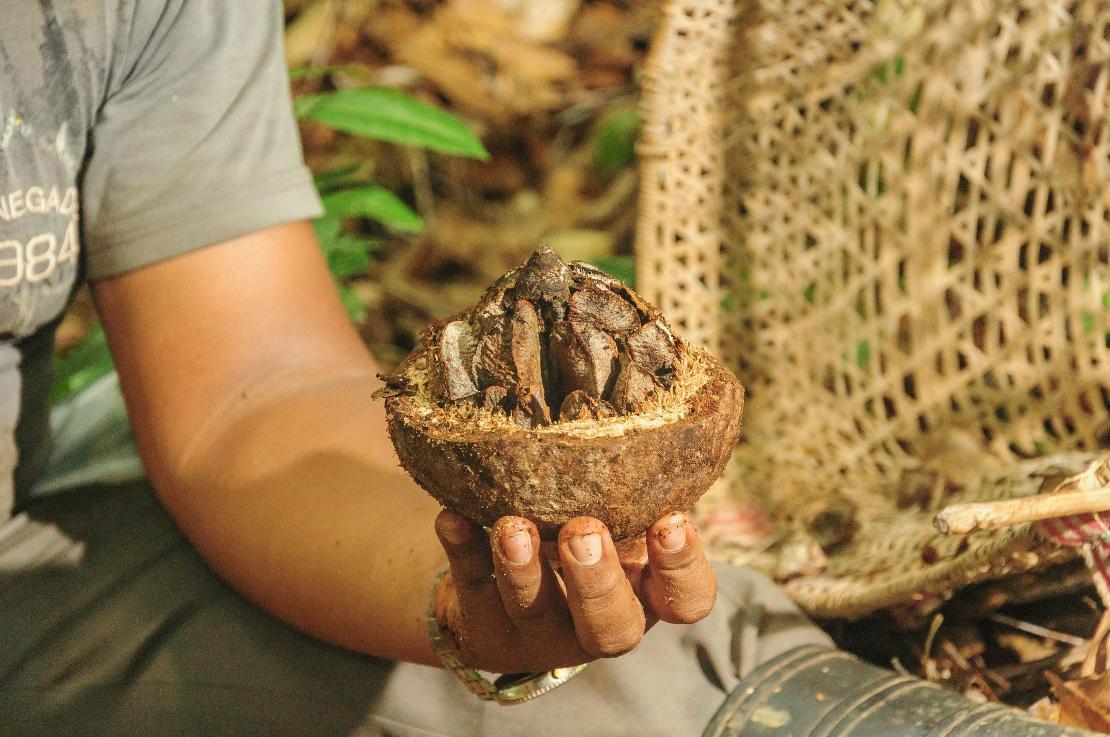Brazil Nuts
Brazil nuts originate from the Amazon region. They cannot be cultivated because they depend on the complex ecosystem of natural forests. They live and thrive only in symbiosis with a variety of resident plants and animals. Pakka Brazil nuts come from the northeast of Bolivia.
With a height of up to 50 meters, the Brazilian walnut is a giant of the rainforest. It takes about ten years for it to bear fruit for the first time. The fruit of the Brazilian Walnut is a capsule that contains 10 to 16 nuts. These in turn are surrounded by a woody shell. Because of the tree's great height, Brazil nuts cannot be picked, but wait for the ripe pod fruits to fall to the ground during the rainy season. From January to March, the trees are visited and the ripe fruits are laboriously gathered. The boll is opened on the spot with a machete, so that only the nuts have to be transported to the collection site.
Brazil nuts…
- have a high content of unsaturated fatty acids and dietary fiber. Dietary fiber supports normal digestion.
- are rich in vitamin E. Vitamin E helps protect cells from oxidative stress.
- are considered a source of magnesium and phosphorus. These minerals contribute to normal energy metabolism and the maintenance of normal bones and teeth.
- are rich in selenium. They are the largest natural source of this trace element. Selenium contributes to normal functioning of the thyroid glands, the immune system and sperm formation.
Source: SR 817.022.16 Verordnung des EDI vom 16. Dezember 2016 betreffend die Information über Lebensmittel (LIV)
Nuts in the shell should be stored in a dry, cool and airy place, preferably in nets. In this way they can be stored for several months. Whole, roasted and spiced Brazil nuts should be stored protected from oxygen and sunlight, ideally at 15 degrees. Closed, opaque packaging is particularly suitable for this purpose.
Source: Schwarz, G. (2012). Gesund mit Nüssen. Herbig, München.
Nutrition facts (100g contain)
kcal
Protein
Carbohydrates
(thereof 2,4g sugar)
Fat
(thereof 15.1 g unsaturated
Fatty acids)
Partners and Suppliers
HYLEA 1884, Bolivia
The foundation stone for the entrepreneurial and socially strongly committed family business "Hylea1884" was laid by Friedrich Hecker in 1884 in the northeast of Bolivia, in Riberalta and Fortaleza: He built up the trade in natural rubber in the late 19th century. The family also pioneered Bolivian Brazil nut production and it is now one of the largest exporters of Brazil nuts in the world.
learn more ->

